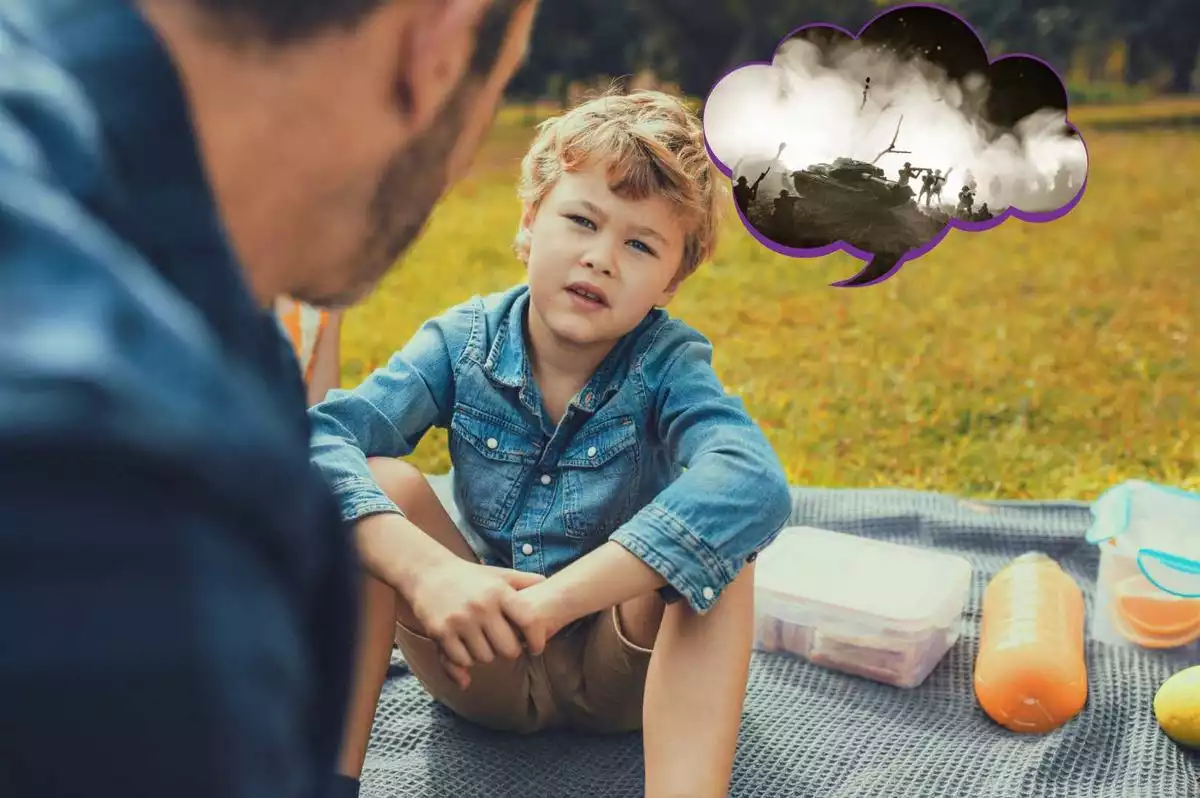How to Talk to Children About Conflict and War
In the silent night, while the world peacefully slumbers, cries of pain resonate in various corners of the globe. Conflicts and wars rage on, leaving invisible scars on the lands they tear apart. But it's not just the physical landscape transformed by these battles.
- Ornella Jameson
- May 13, 2025
- 0 Comments
- 2403 Views
It's also the innocence of children that is inevitably affected. Currently, according to alarming reports, more than 30 armed conflicts shake our planet. These events aren't just distant headlines; they profoundly impact our children, shaping their worldview and hopes for the future.
As parents, educators, and members of society, we must comprehend this influence's magnitude. Our children are growing up in a world where boots and war cries can echo into their bedrooms. How can we prepare them to face these realities while preserving their faith in humanity? This is a question that haunts me, and I believe the answer lies in the points that will be elaborated below.
You can also read Raising an Independent Child: A Step-by-Step Guide for Parents.
I. Understanding Children's Perspectives and Emotions
Explore their current knowledge and emotions:
Our children, these excellent emotional sponges, absorb the world around them with exceptional sensitivity. To begin discussing conflicts and war with them, it's essential to understand their current perspective and the emotions they harbor. Ask open-ended questions, be attentive to their responses, and listen with your heart. They might have heard whispers from adults, seen troubling images on television, or felt diffuse anxiety without being able to express it clearly.
II. Maintain calm and use age-appropriate language.
In these delicate moments, our calmness serves as their anchor. Approach the topic with a soothing presence, using simple words tailored to their level of understanding. Avoid brutal details and offer clear explanations about what they can comprehend. We aim to create a safe space where they can ask questions, express their concerns, and explore their feelings without fear of judgment. By demonstrating patience and empathy, we pave the way for meaningful conversations and stronger bonds with our children facing these complex challenges of the modern world.
II. Encouraging Compassion and Empathy
Promote compassion, not stigma, towards affected individuals:
It's fundamental to encourage our children to see beyond conflicts and wars to recognize the common humanity in every human being, regardless of origin or situation. Instead of cultivating fear or stigma towards those affected by these tragedies, we can teach our children compassion. Helping them understand that each individual has a story, dreams, and emotions, even in distress, can inspire them to develop a compassionate heart.
III. Highlight the efforts of helpers and heroes in conflict situations.
In the narratives of conflicts, there are often acts of heroism and generosity that deserve to be brought to light. By emphasizing the efforts of people who assist others in difficult situations, we show our children that there are glimmers of hope even during darkness. Humanitarian workers, doctors, teachers, and volunteers who provide aid in conflict zones become living examples of courage and altruism. Let's encourage our children to admire these heroes and be inspired by their dedication, thus transforming their empathy into positive actions.
IV. Ensuring Continued Support and Care
You can also learn Smartphones & Tweens: Finding Safe Alternatives for Healthy Growth.
V. Concluding Discussions with Care and Reassurance:
We must conclude these conversations with gentleness and reassurance when we talk to our children about conflicts and war. The world may seem vast and sometimes frightening, but by offering soothing words and comforting gestures, we help our children feel secure. Reminding them we are here to protect and support them can ease their fears and enhance their safety.
VI. Regularly Checking In to Gauge their Feelings and Understanding:
Open communication is key to understanding our children's feelings and thoughts. It's essential to regularly check in with them to assess their level of understanding and how they are feeling. We show our children they can always come to us with their concerns by asking gentle questions and listening attentively to their responses. This ongoing communication allows us to detect any signs of distress or confusion, allowing us to provide the answers and comfort they need.
VII. Managing Information and Self-Care
Limiting Exposure to Overwhelming News and Graphic Images:
In an ever-connected world, our children are exposed to a constant flow of information, some of which can be extremely disturbing. It is our responsibility as parents to restrict their exposure to overwhelming news and graphic images associated with conflicts and war. By monitoring the media they consume and reducing their exposure to inappropriate content, we can protect their innocence and preserve their emotional well-being.
VIII. Emphasizing the Importance of Self-Care for Both Children and Parents:
War and conflicts can generate stress and anxiety, not only in our children but also in us as parents. It is crucial to highlight the importance of physical and mental self-care. Encouraging relaxing activities, such as meditation, yoga, or even a simple outdoor walk, can help soothe the mind. By setting an example and integrating self-care practices into our daily lives, we teach our children the importance of managing their emotional well-being and creating a stable and loving family environment, even in uncertain times.
In a world troubled by conflicts and war, guiding our children through these realities is a delicate yet crucial task. By understanding their perspectives, encouraging compassion, providing continuous support, and managing information responsibly, we can help our children navigate this complex landscape with resilience and empathy. Equipping them with tools to understand, empathize, and care for themselves prepares them to become engaged and understanding global citizens.

 | Unlock Success with Our Guide
| Unlock Success with Our Guide



0 Comments